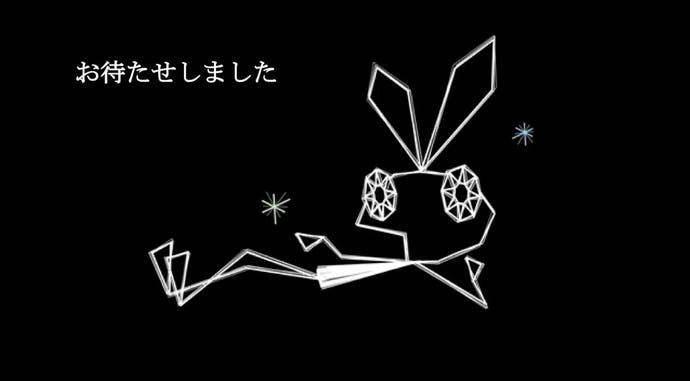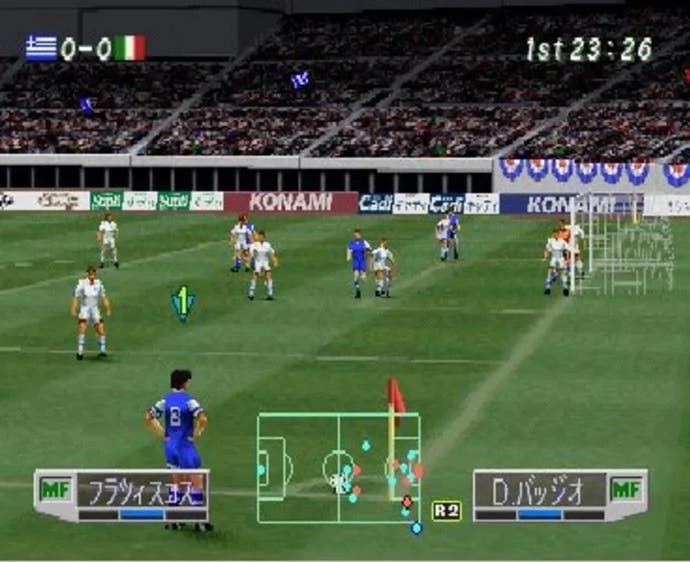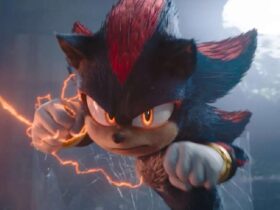This was originally going to be a list of the best PlayStation games. It’s the 30th anniversary of Sony’s industry-shaking console, so it made sense to pick the best, but that’s not so simple when looking at games that are decades old. What does “best” even mean when looking back that far? A lot of retro games have been superseded on newer platforms, and some of the classics were bettered multiple times on the original hardware.
To me, what truly makes a game special, a standout classic worthy of recognition, isn’t just how you feel about it now but the impact it had. Would the games industry be the same today if some of these games hadn’t existed? To go even further, would PlayStation be the dominant force it is? So, no, this isn’t the 10 best PlayStation games, it’s the most important, the ones that mattered the most, the games that when glanced on your shelf instantly transport you back to that exciting time of discovery and meant something to us.
We’re not including honourable mentions, despite having a list of cut games that people will obviously be angry about not being included. Picking 10 was a little painful, especially for a handful of games that just slipped off the list like a last-second drop on a coin pusher machine as you were about to walk away. Such is life.

Ridge Racer
The PlayStation had a lot of impressive games at launch, but Ridge Race was the game to show off what this new console could do – and it played superbly too. It’s hard to understate how much of a ‘wow’ moment this was 30 years ago. We’d seen some simple 3D games on home consoles, but it wasn’t until the PlayStation (and the just prior released SEGA Saturn and 32X) that we saw the 3D games from arcades in our own homes. As a child of 12 years old when I saw Ridge Racer running on a PlayStation for the first time, I abandoned my plan to buy a Saturn (I still love you, SEGA Rally!) and ordered Sony’s machine. And that was that. Arcade games being ported to home consoles was a big deal back in the 90s, and the PlayStation did it better than the rest with games like Ridge Racer, Tekken, and Time Crisis. Ridge Racer was the headturner, the jewel in the launch lineup, and the status quo of the games industry forever changed because of it.
-Tom O

Metal Gear Solid
I remember at the time Metal Gear Solid being described as the perfect rental game, back when Blockbuster still existed. And while that description does the game a disservice, it does make some sense: Metal Gear Solid was a playable film. PlayStation as a console saw video games maturing and Kojima’s stealth classic was at the forefront, with its exploration of nuclear war, philosophical musings, and gritty cinematic visuals to match its dystopian, cyberpunk themes. It’s amusing, then, that now its most memorable moments are among its silliest: finding a necessary codec code on the back of the actual disc box, protecting a naked soldier from gunfire, letting a wolf pup pee on your cardboard box to avoid detection, and of course Psycho Mantis reading your mind through your memory card. Never change, Kojima.
-Ed Nightingale

Final Fantasy 7
Final Fantasy 7 didn’t just revitalise the series, it revitalised a genre – at least, in the West. While in Japan Final Fantasy games were released in proper numbered order, in North America many were skipped over and left unreleased – famously, Final Fantasy 6 was renamed Final Fantasy 3. In Europe, meanwhile, the first series release was Final Fantasy Mystic Quest, confusingly actually named Mystic Quest Legend. Final Fantasy 7 was a reset, then, establishing the proper numbered order on a global level for years to come. Moreover, the shift to a disc format allowed for lavish FMVs, complex, cinematic storytelling, and 3D visuals. As the second highest-selling game on the platform, it was a resounding success for both Squaresoft (as it was known at the time) and Sony, spawning not only series re-releases but opening the floodgates to an entire genre. The original PlayStation was the console for JRPGs, following in the wake of Final Fantasy 7.
-Ed Nightingale

Tomb Raider
Tomb Raider’s one of the quintessential PlayStation games, which overlooks the inconvenient fact that it originally launched on the Sega Saturn. No matter: Lara Croft quickly became synonymous with Sony’s machine, and before long she was synonymous with Sony’s whole new era of mainstream video games too. It’s a role she was worthy of. Core Design’s game offered a clever spin on Indiana Jones and created a memorable protagonist, but the early games hold up so well because of their unique atmosphere. They offer a warrenous 3D landscape made distinct through a sense of scale, claustrophobia and, most of all, loneliness. Croft’s twin pistols may have helped define her look, but for the best parts of the game they were carefully stowed as players settled into a much more thoughtful engagement with landscape and multi-part puzzles. The sense of place the original Tomb Raider offers – the grottoes, the caves, the buried temples – is unbeatable. To play a Tomb Raider game is to be transported.
-Christian Donlan

Vib-Ribbon
PlayStation was the place to experience new things. It helped, no doubt, that 30 years ago the video game industry was still relatively young, finding its feet in a world of technology improving at a pace we couldn’t imagine, but there was a real sense of experimentation within the PS1’s game library. Vib-Ribbon, the most bizarre rhythm game you’ll likely ever experience, encapsulates this wonderfully. You’re required to press controller buttons (or combinations) to bypass obstacles that are placed along a line. The neat twist is that you could insert your own music CDs and the game would generate new levels based on the tracks. This might seem pretty rudimentary today, but it was a marvellous curiosity back in 1999. It’s easy to see why Vib-Ribbon is often brought up during arguments about how PlayStation’s first-party games today lack that spark of originality seen in its earlier days. Vib-Ribbon might not have been responsible for leading that charge, but it stands as a memorial to what we have lost.
-Tom O

Resident Evil
“But what about Alone in the Dark?” I say to myself while imagining people being outraged about a game not released on the PlayStation not being on a list of PlayStation games. Alone in the Dark was amazing, for sure, and directly influenced Resident Evil’s cinematic fixed-camera presentation, but Capcom’s take on horror games has had an undeniably bigger impact on video games and popular culture. Some people might argue that Resident Evil 4 is more important to modern video games but, as with many 32-bit era games, the original Resident Evil pushed what was cinematically possible in video games, spawned countless sequels and movies, and stands as one of the biggest franchises of all time. Oh, and it has that giant F’ing spider boss!
-Tom O

Gran Turismo
As a kid F1 on the BBC was brilliant. A staple of British Sunday life; a roast dinner on your lap as drivers sped round tracks at ridiculous speed. No video games came close to replicating this, but in 1992 Formula One Grand Prix by MicroProse released on PC and was a revelation. On consoles we had a wave of arcade racing games following Ridge Racer, Daytona and the like, and Psygnois released a superb Formula 1 game in 1996, but it wasn’t until Gran Turismo in 1998 that simulators became a big deal. Gran Turismo’s authentic driving and clear love of cars hit a chord with gamers, helping it become the biggest seller of all time on PlayStation. It’s now a franchise synonymous with the PlayStation brand, the series totalling well over 90 million unit sales.
-Tom O

Crash Bandicoot
The obvious, most oft-cited reason Crash was so important for the PlayStation was that it gave the console a much-needed mascot. Despite being a third-party game, Crash Bandicoot was chosen to bump Sony’s only recently signed Twisted Metal off the main spot of its 1996 E3 booth, placing Crash directly and metaphorically right next to Nintendo’s Mario 64 on the show floor. Just when mascots were at their most essential for platform-holders, Crash landed right in the PlayStation’s lap.
But there’s also a bit more to it than that. As well as being an incredibly well-timed mascot, Crash Bandicoot also did something genuinely new, in providing a different take on what a 3D platformer could be. Where Nintendo sent Mario out into an open, free-roaming environment, Naughty Dog’s small team, developing Crash simultaneously, opted for what they jokingly called the “Sonic’s Ass” idea, placing a camera directly behind the platforming character. Where Mario’s open environments offered more room for variety in moment-to-moment gameplay, Crash’s narrow, linear focus gave the developers more room to flex their engineering muscles, with what were at the time hugely luxurious and detailed environments. Like the same species evolving on two separate continents, it’s an early fork in the road that remains visible in the two companies as they are today. Nintendo continues to prioritise gameplay above all, while Naughty Dog, and by virtue its platform the PlayStation, continues to place emphasis on high-fidelity graphical showcases that flaunt the console’s power. Alternate history in the making.
-Chris Tapsell

WipEout
Video games tried so very hard to be cool back in the 90s. If you think that the medium isn’t taken as seriously as it should be in the year 2024, back when the PlayStation launched the industry was seen as an extension of the toy market. Parents thought this, too – just talk to any child of the 80s and you’ll hear stories of how they walked out of stores with the most violent games of the day. To break free from this image games had to be modern, they had to appeal to actual adults, albeit young ones. Enter WipEout, the game that revolutionised in-game music and crossed over into club culture, and employed The Designers Republic to create an iconic aesthetic. Club goers were drawn in by the rave music soundtrack, while kids got their first taste of the likes of The Prodigy and Chemical Brothers. When I think of PlayStation the futuristic vibe of WipEout is the first thing that comes to mind.
-Tom O

International Superstar Soccer Pro
These days the football video game is dominated by one franchise: EA FC (formerly FIFA). Back during the original PlayStation’s era, though, it seemed everyone was making a football game, although very few were any good. The best, so far ahead of the others VAR wouldn’t have been needed, was International Superstar Soccer, which went on to become Pro Evolution Soccer. This series was only available on the PlayStation (although the N64 received some similar games) and became the go to football game for people who wanted more depth than FIFA offered. FIFA eventually looked at some of what ISS was doing, steamrollering it in the process, but for a period ISS and PES were the football games of choice and made the PlayStation a must-own for football fans.
-Tom O
That’s it. A list of 10 games. Do you agree? Let us know and share your own lists of the 10 most important PS1 games – hopefully you’ll see how tricky it is to pick just 10.
fbq('init', '560747571485047');
fbq('track', 'PageView'); window.facebookPixelsDone = true;
window.dispatchEvent(new Event('BrockmanFacebookPixelsEnabled')); }
window.addEventListener('BrockmanTargetingCookiesAllowed', appendFacebookPixels);












Leave a Reply